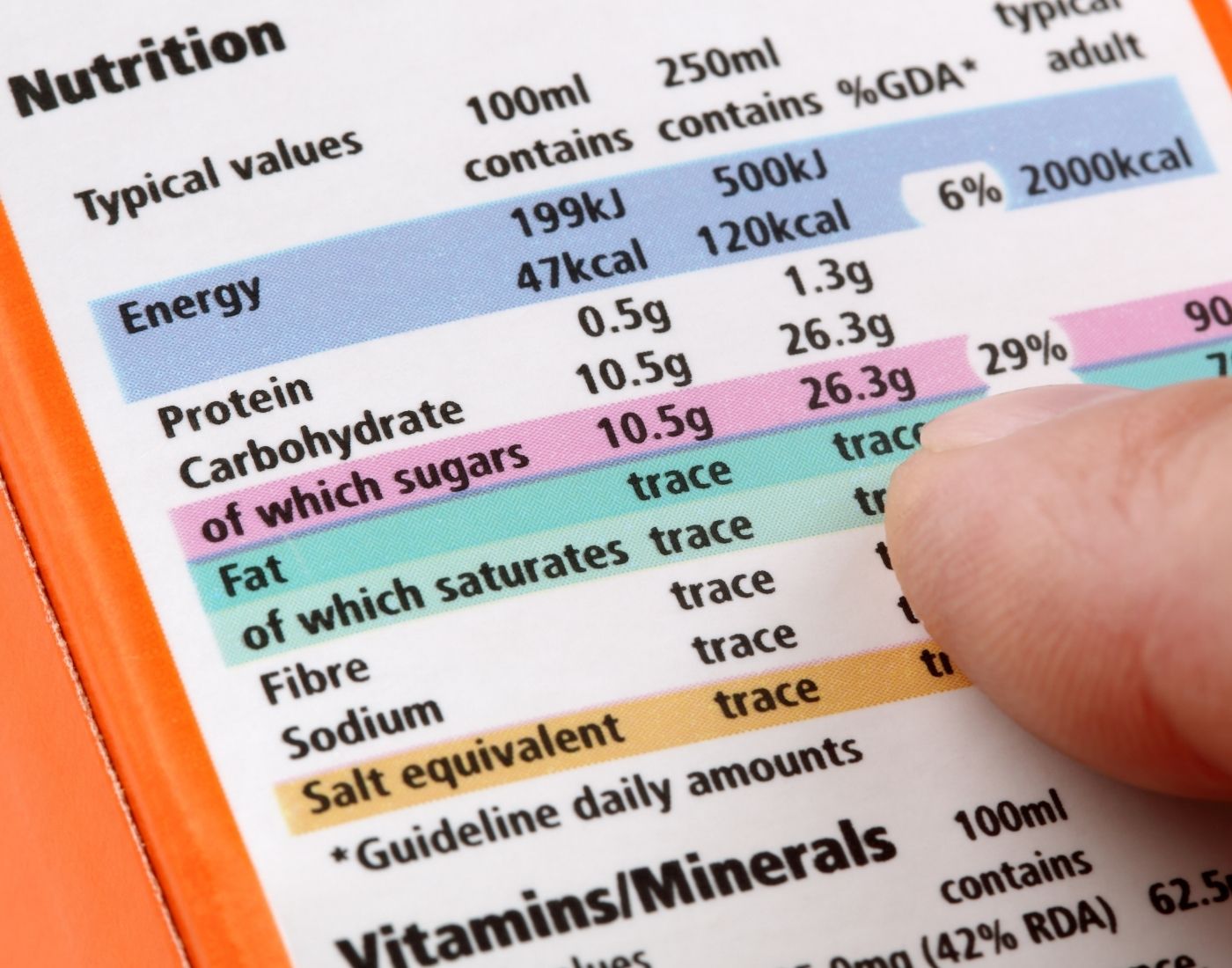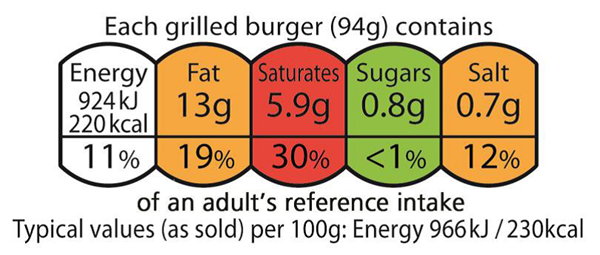Since 13 December 2016 nutrition declarations have been required for most* prepacked foods. This means that if you produce prepacked food then you must include the following information on the package or on the label:
- Energy must be displayed in both kilojoules (kJ) and kilocalories (kcal) contained in 100g or 100ml of the food.
- Values of the nutrients - fat, saturates, carbohydrate, sugars, protein and salt - must be displayed as the weight in grams (g) present in 100g or 100ml of the food.
- The information should be displayed as in Table 1 but if space on the label is limited the information may be provided in normal linear text similar to the ingredient list.
Table 1 (back of pack)
| Values per 100g or 100ml | |
|---|---|
| Energy | kJ and kcal |
| Fat | g |
| - of which saturates | g |
| Carbohydrate | g |
| - of which sugars | g |
| Protein | g |
| Salt | g |
Note that if the product contains no added salt but sodium is naturally present in the food, the following statement should appear in close proximity to the nutrition declaration:
“This product contains no added salt. Salt content is due to naturally occurring sodium.”
Corresponding statements cannot be used for any of the other nutrients.
The amount of salt in a product is calculated by determining the total sodium in a product (from naturally occurring salt and added salt plus any other sodium compounds) and multiplying by 2.5.
The information should be printed on the package or label ensuring clear legibility, in characters using a font size where the x-height (see below), is equal to or greater than 1.2mm.



